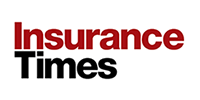‘The biggest overarching driver we see is awareness – we’re all far more aware of mental health and its impact on business,’ says broker
Work-related stress (WRS) has quietly become one of the fastest-growing areas of liability and employee health claims across the UK, with insurers now grappling with the complex overlap between regulatory scrutiny and a sharp rise in mental health awareness.

Industry figures warn that this surge in stress allegations – often linked to overwork, management issues or poor workplace culture – is raising intricate coverage and causation questions that risk costly disputes if not carefully managed.
Barbara Goddard, partner at Clyde and Co and a specialist in WRS claims, said the current spike was being driven by both economic and cultural factors.
“There has been a real increase in awareness of mental health, protecting your mental health and what your employers can do to help you with that,” she said.
“Combined with the cost of living crisis, that’s definitely driven the increase in claims.”
The cost of living crisis, she explained, has acted as a catalyst for a new wave of stress-related litigation.
“We always see an increase in personal injury-type claims when there’s a recession or any kind of cost of living crisis,” she added.
This echoes clinical findings from Axa Health, where consultant clinical psychologist Dr Imren Sterno said financial instability and job insecurity were fuelling anxiety across the workforce.
“The cost of living crisis is having an impact on people’s mental health and more individuals are seeking support from employee assistance programmes due to fears of losing their job,” she said.
“Financial uncertainty does seem to be driving considerable mental health distress.”
A changing claims landscape
While traditional stress claims – linked to overwork, bullying or managerial failings – continue to dominate, Goddard noted a growing diversity in the types of claims now emerging.
Read: Insurance Times Awards 2024 – QBE tackling mental health challenges with Minds in Business tool
Read: Zurich UK to offer neurodiversity assessments for employees from 2025
Explore more diversity and inclusion-related content here, or discover more news here
She said: “I’ve dealt with claims from banks, educational institutions, retailers and product manufacturers – all very traditional overwork or bullying-type stress claims. But we’re now seeing more of the unusual or ‘add-on’ claims – something else plus stress.”
In the Health and Safety Executive’s (HSE) ‘Health and safety at work Summary statistics for Great Britain 2024, findings showed that stress-related conditions now account for around 46% of all work-related illness and time off work.
Under the Health and Safety at Work Act 1974 and Management of Health and Safety at Work Regulations 1999, employers are legally required to assess and manage these risks – including psychological harm.
That regulatory backdrop, combined with tighter corporate governance expectations under the FCA’s Consumer Duty, has sharpened insurer attention on how policyholders are managing mental wellbeing and evidencing that support.
Coverage flashpoints and legal ambiguity
The rise in stress-related claims has also reignited debate about policy wording. Goddard warned that traditional “bodily injury” clauses may not adequately reflect modern realities.
“We’ve always traditionally had ‘bodily injury’ wording, which very clearly covers recognised psychiatric injury,” she said.
“But now we’re moving into an arena where the standard policy wording may need to be looked at again, because it may not cover some of these newer variations we’re seeing.”
Chris Rofe, partner and member of Lockton’s people solutions team agreed that insurers and brokers alike were navigating a grey area.
He said: “Across our client base, it’s workloads, cost of living, hybrid management challenges – but the biggest single overarching driver we see is awareness. Some of this is stress where work isn’t the trigger at all – it just happens to manifest itself at work.”
That blurring of cause and effect – between home and workplace pressures – can create uncertainty in determining whether an alleged stress injury meets the threshold for coverage.
Insurers, according to Rofe, are increasingly examining the ecosystem of employer support, from mental health training to digital wellbeing tools, when assessing both risk and defensibility.
“Within this basket of things an employer can do to reduce or defend claims, one of the most important is being able to demonstrate measures they’ve put in place to support mental wellbeing,” he said.
Data-driven prevention
Lockton’s Rofe said brokers and insurers were beginning to take a more data-led approach to stress-related exposure.
He said: “We’ve got a plethora of data points – sickness absence, employee assistance programme usage, medical scheme data.”
Lockton is working with underwriters to link mental health investment to risk pricing.
Rofe added: “If I could sit with an underwriter and say, ‘My client has invested heavily in a mental health app, they have Mental Health First Aiders and EAP access,’ I’d like to see that reflected in their risk pricing. But we’re not there yet.”
For now, though, insurers’ focus remains on defensibility and early intervention.
Sterno said: “All employers should be looking at what provisions they have to support their employees’ mental health and focusing on the type of working culture they are creating. Many are now seeking professional support from experts to help shape their wellbeing and mental health strategy.”
The HSE has made clear that work-related stress will remain a key area of focus under its Health and Work Strategy 2022–2032.
Goddard predicted increased enforcement.
“If time and funding allow, I think we’ll see the HSE focusing more on stress – going after organisations that are failing in these areas, possibly even prosecuting them,” she said.
For insurers, that means both higher claim frequency and potential exposure under employers’ liability and D&O policies.
Goddard added: “Know your clients – that’s always good advice. Understand who is vulnerable to these kinds of claims and how they can be advised to educate their workforce, reduce risk and retain documentation.”
Rofe warned that the risk was now systemic rather than episodic: “This isn’t a spike. For everything we’ve discussed, this is a trend rather than a blip.
“The biggest risk is ignoring it.”
With work-related stress claims spanning multiple coverage lines – from liability and professional indemnity to group income protection – the need for clear boundaries has never been greater.
The issue is not just whether stress is covered, but how employers and insurers can jointly manage and prevent it.

Hosted by comedian and actor Tom Allen, 34 Gold, 23 Silver and 22 Bronze awards were handed out across an amazing 34 categories recognising brilliance and innovation right across the breadth of UK general insurance.






















































No comments yet